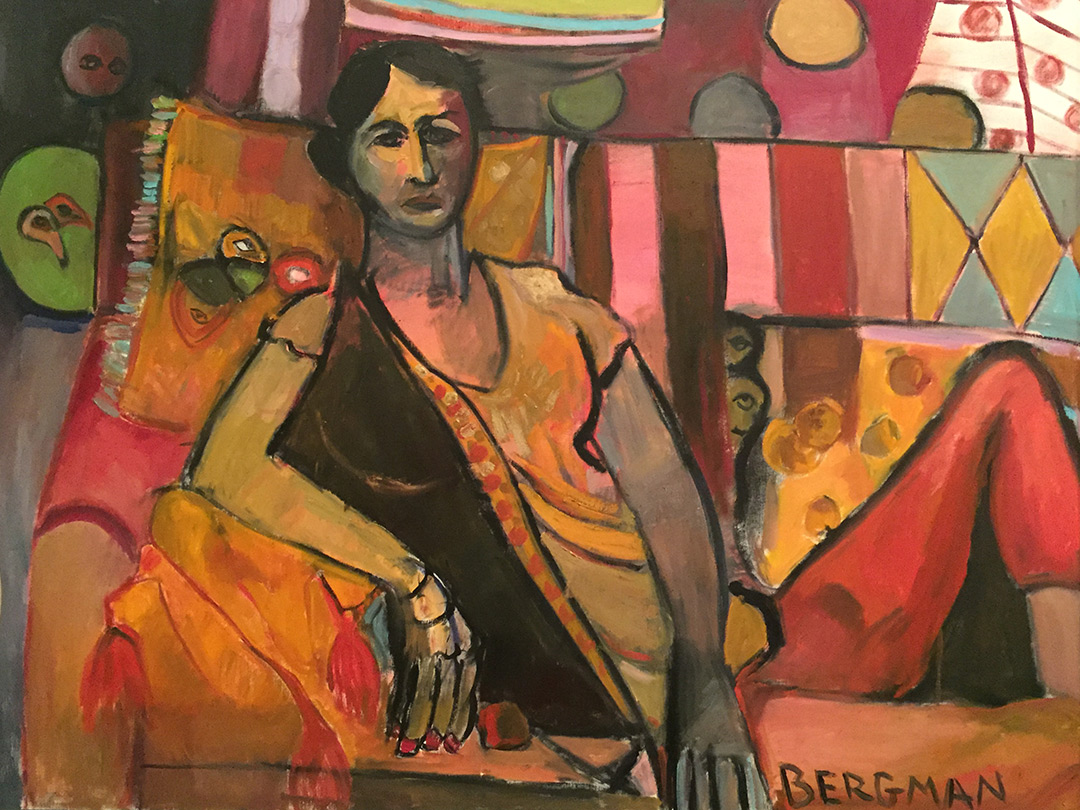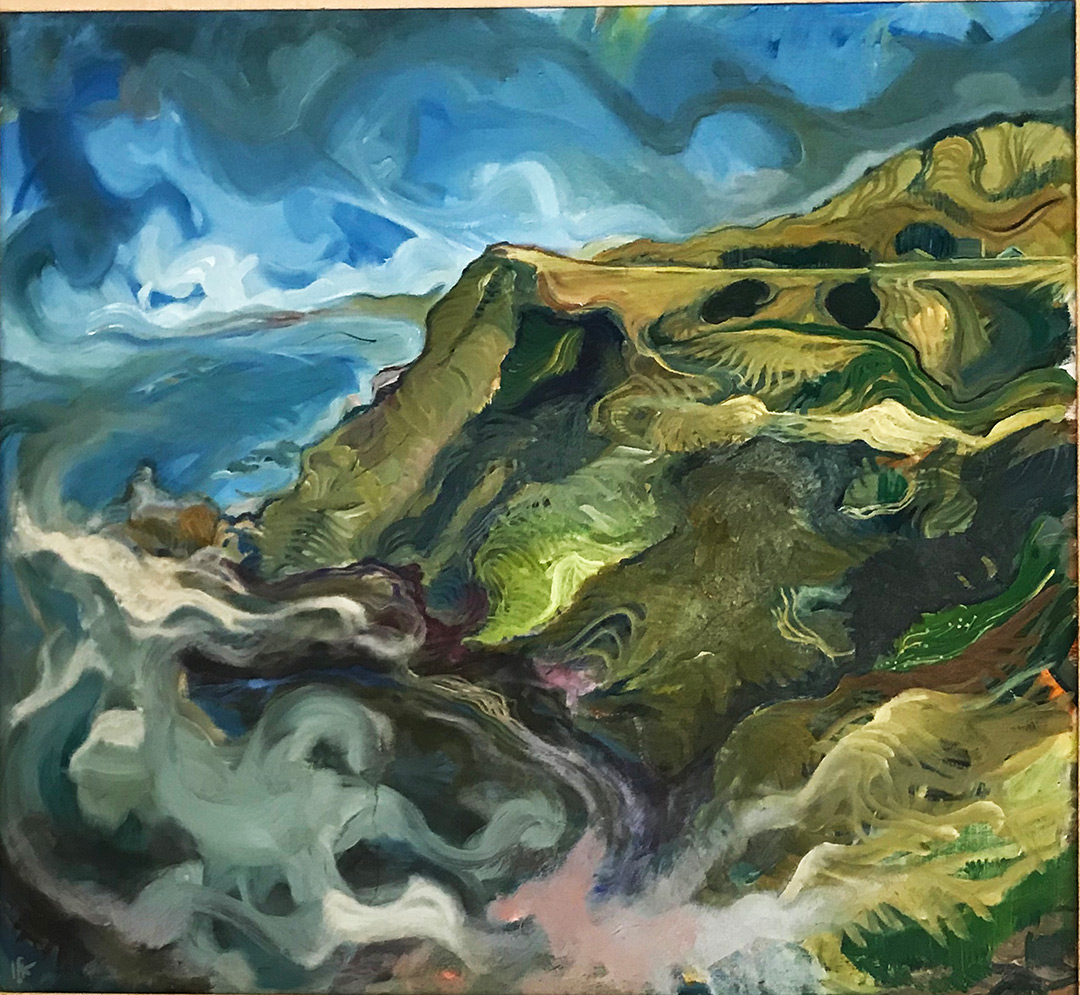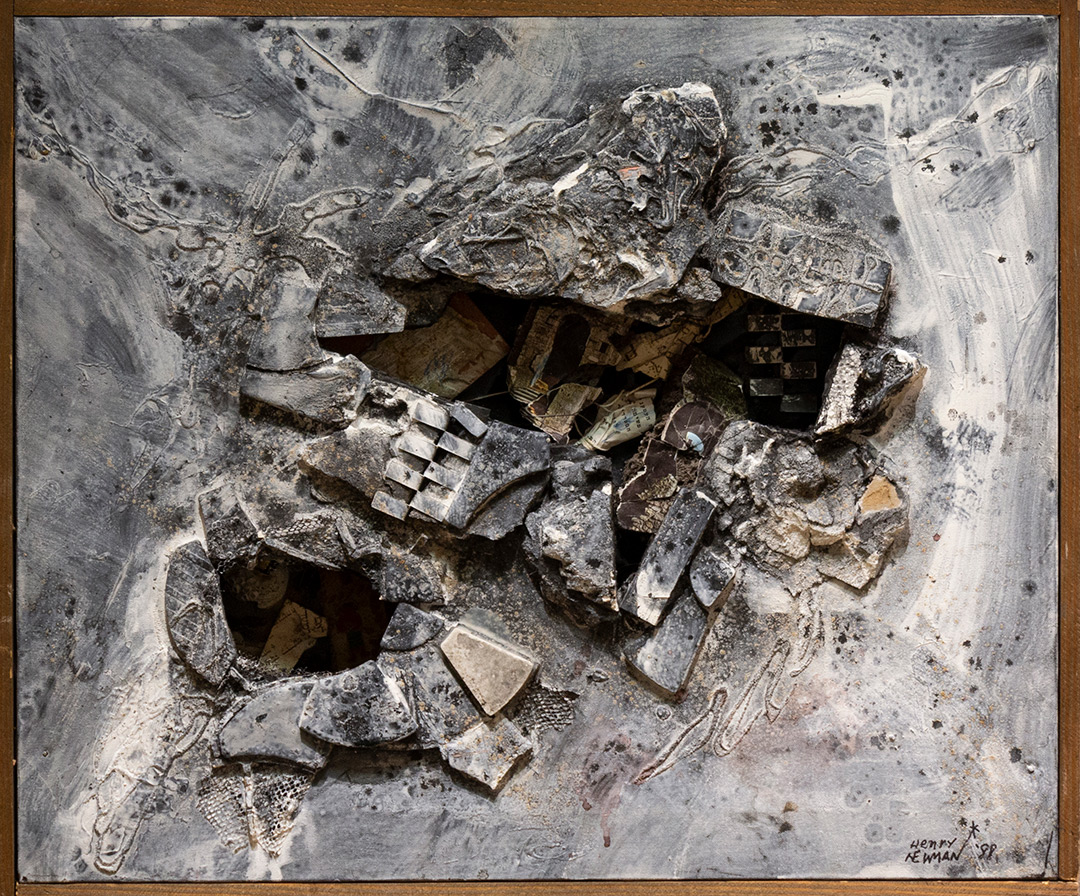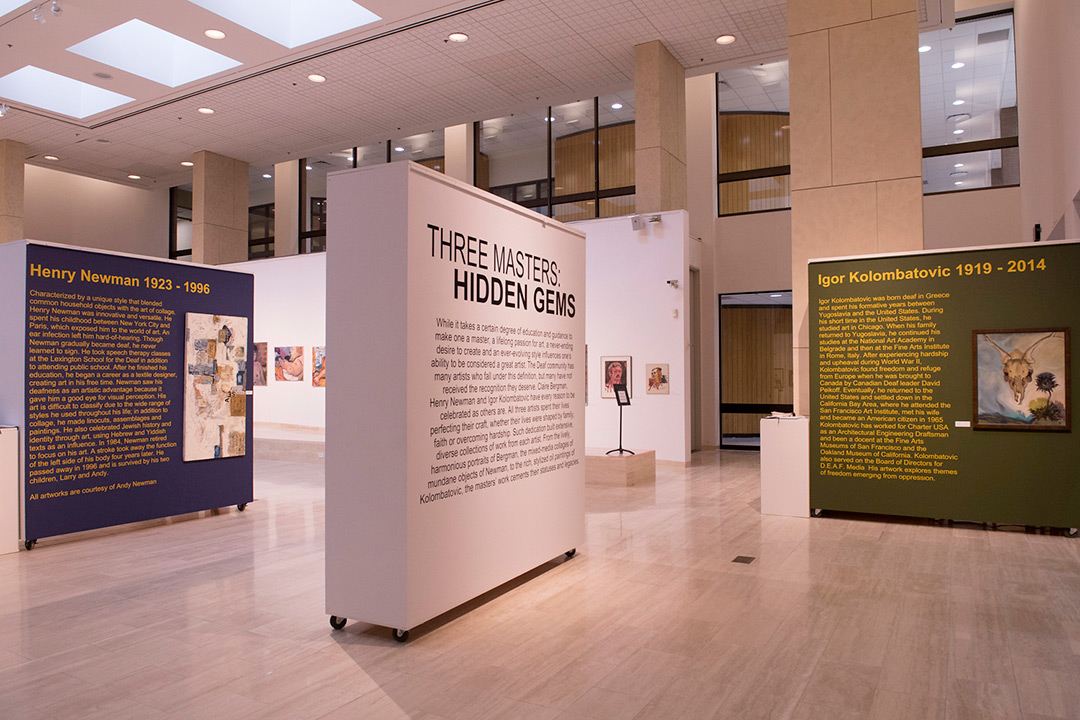RIT/NTID Dyer Arts Center hosts ‘Three Masters: Hidden Gems’ exhibit through April 20
Focus is on three uniquely qualified artists representing different styles
Mark Benjamin
“Three Masters: Hidden Gems” at NTID’s Dyers Arts Center showcases portraits by Claire Bergman, oil paintings by Igor Kolombatovic, and mixed-media collages by Henry Newman.
Three artists whose works have been shaped by family, faith and overcoming hardships are the focus of the “Three Masters: Hidden Gems” exhibit at the Joseph F. and Helen C. Dyer Arts Center at Rochester Institute of Technology’s National Technical Institute for the Deaf. The show runs through April 20.
“Three Masters” showcases the lively, harmonious portraits by Claire Bergman; the rich, stylized oil paintings by Igor Kolombatovic; and the mixed-media collages of mundane objects by Henry Newman.
 Gabe Ponte-Fleary A piece by artist Claire Bergman.
Gabe Ponte-Fleary A piece by artist Claire Bergman.Claire Bergman describes herself as a portraitist, emphasizing the importance of the figure as a whole with an inner life of its own. She says the artistic process allows her to study characters and she attributes her success to self-growth and self-confidence as her art style evolves and develops. She is best known for her work with oil, watercolor and pen and ink. She has said that her deafness influences her work and she imagines that the subjects of her portraits are trying to lip-read or follow a conversation.
 Gabe Ponte-Fleary A landscape oil painting by Igor Kolombatovic.
Gabe Ponte-Fleary A landscape oil painting by Igor Kolombatovic.Igor Kolombatovic’s artwork explores themes of freedom emerging from oppression. After experiencing hardship and upheaval during World War II, Kolombatovic found freedom and refuge from Europe when he settled in Canada. He eventually moved to California, where he attended the San Francisco Art Institute. He worked for Charter USA as an architectural engineering draftsman and was a docent at the Fine Arts Museums of San Francisco and the Oakland Museum of California. He is best known for his artwork that he says reminds him and others about how God’s blessings outweigh his struggles, as he sought to examine his deaf identity and the history involved.
 Gabe Ponte-Fleary A mixed-media piece by Henry Newman.
Gabe Ponte-Fleary A mixed-media piece by Henry Newman.Henry Newman’s art is characterized by a unique style that blends common household objects with the art of collage, seeing the potential in what others saw as trash or junk. Materials he used to create his mixed media collages included scraps from hardware and appliances, hinges, plywood, backboards from TV sets, old clothing, jar lids, rusted metal and tape cassettes. He saw his deafness as an artistic advantage because it gave him a good eye for visual perception. He also used a wide range of styles including linecuts, assemblages and paintings, and celebrated Jewish history and identity through art, using Hebrew and Yiddish texts as influences.
A closing reception, free and open to the public, will be held at the gallery 5-7 p.m. Friday, April 12.
The gallery is located on the RIT campus in Lyndon Baines Johnson Hall, 52 Lomb Memorial Drive, Rochester. Gallery hours are 10 a.m.–5 p.m. Monday through Friday, and 10 a.m.–2 p.m. Saturday. For more information, go to www.rit.edu/ntid/dyerarts/.













